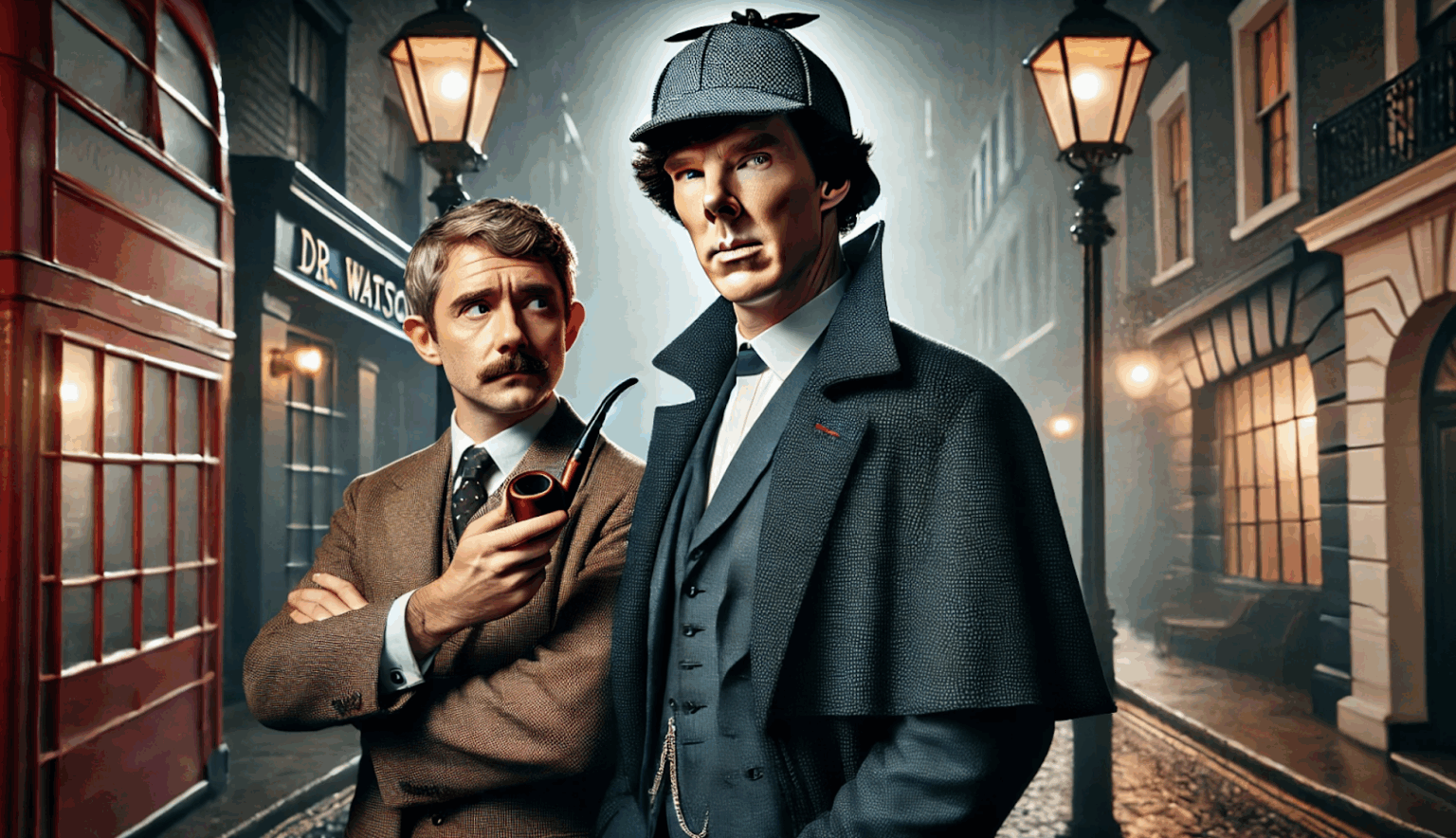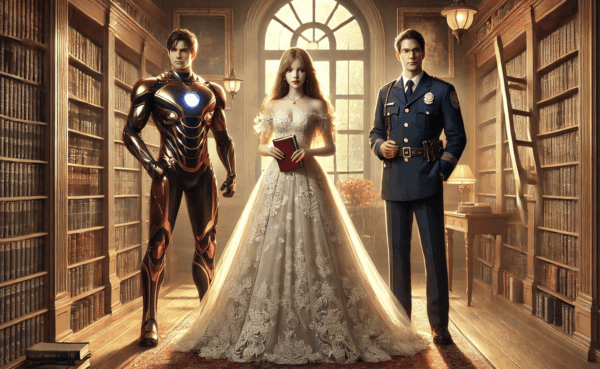Every story needs a protagonist, the character we root for, but what about the characters who exist to highlight everything the hero is not? These are the foil characters—those who contrast with the protagonist to emphasize key traits, motivations, and decisions. But what is a foil character, and why are they so important in literature?
In simple terms, a contrasting character is someone whose qualities sharply contrast with the protagonist’s, revealing more about the hero’s personality and choices. From literary classics to modern works, they are essential in deepening our understanding of the main character’s strengths and flaws. In this article, we’ll explore their role in narrative development and how they help shape character growth. By the end, you’ll appreciate how these characters—sometimes overshadowed—play a starring role in defining the hero. Ready to explore the fascinating world of character contrasts? Let’s get started!
What is a Foil Character and Why Do They Matter?
So, what is a foil character? In simple terms, it is a character who contrasts with the protagonist in ways that highlight key aspects of the main character’s personality. The foil character definition revolves around this contrast, showing what the protagonist is not, often through differences in values, behavior, or outlook on life. Understanding this contrast helps to reveal the protagonist’s traits, whether by emphasizing their strengths or revealing their flaws.
These characters serve a unique role in storytelling. Rather than being antagonists, they complement the protagonist, revealing traits that might otherwise be overlooked. For instance, if the protagonist is impulsive and emotional, their foil might be calm and logical, showcasing the differences between the two. It’s not just about creating contrast for the sake of it; the relationship between the two characters deepens our understanding of the hero by making their qualities stand out more vividly.
By presenting a character who acts as the opposite or mirror of the protagonist, writers create an opportunity for growth. Through the differences, we see how the protagonist evolves or confronts their flaws. This complementary relationship is what makes the mirror character so valuable—they aren’t just side players, but integral to shaping the protagonist’s journey.
The Role of Character Foils in Literary Works
Character foils are more than just contrasting figures—they are key elements in shaping the narrative and character development in literature. While they might not always be the center of attention, they play a crucial role in defining the protagonist’s journey. By highlighting specific traits, a foil character allows the reader to gain a deeper understanding of the main character’s personality, motivations, and growth. Understanding the character foil definition literature helps to recognize how these contrasts deepen the portrayal of the protagonist.
In literary works, foils serve as mirrors or opposites to the protagonist, often pushing the main character toward growth or self-realization. Through the contrast, the protagonist’s qualities, whether positive or negative, come into sharper focus. The foil may embody traits that the protagonist lacks, or even display flaws that the hero needs to avoid. This contrast not only creates dramatic tension but also provides a valuable tool for exploring different aspects of human nature.
- Highlighting traits: contrasting characters accentuate the protagonist’s strengths or weaknesses, making their traits more pronounced and revealing hidden aspects of their personality.
- Creating contrast: By being opposites, foils help clarify the protagonist’s values, behavior, and decisions, providing a clearer understanding of the main character’s motivations.
- Encouraging growth: The foil often acts as a mirror, challenging the protagonist to confront their flaws, grow, and make meaningful decisions.
- Revealing internal conflict: The foil’s contrasting qualities may push the protagonist into conflict, forcing them to grapple with their limitations or misunderstandings.
- Supporting self-realization: Through the foil’s influence, the protagonist can experience self-reflection and ultimately come to a better understanding of their own journey.
Take, for example, a protagonist who struggles with decisiveness. A contrast character who is resolute and quick to act can highlight the protagonist’s indecision, making their eventual growth and decisions more meaningful. Over time, this dynamic can challenge the protagonist, forcing them to confront their weaknesses and develop a clearer sense of self.
The role of character foils extends beyond simple comparison. They encourage introspection, spark conflict, and drive the protagonist toward a more nuanced understanding of themselves. In this way, foils play an essential part in the character development process, offering a mirror through which we see the protagonist evolve.
Types of Foil Characters
Foil characters are not one-size-fits-all; they come in various types that contribute to the story in different ways. While all character foils provide contrast to the protagonist, the way they do so can vary greatly. Understanding the foil character definition is key to recognizing how these contrasts play a crucial role in highlighting the protagonist’s traits. Here are a few common types of foil characters and how they function in literature:
- Direct Foil
A direct foil contrasts sharply with the protagonist in terms of personality, beliefs, or behavior, making the differences between them obvious. This clear contrast helps to highlight the key traits of the main character, often making their strengths or weaknesses more noticeable. For example, in Frankenstein, Victor Frankenstein’s intense ambition contrasts with his creature’s simplicity and innocence. - Inverse Foil
An inverse foil is the opposite of the protagonist, but not necessarily in a moral sense. Instead, the foil’s contrasting traits serve to exaggerate the differences between the characters, emphasizing what the protagonist could have been under different circumstances. For instance, Tom Buchanan in The Great Gatsby contrasts with Gatsby’s idealism and romanticism, revealing the darker side of the American Dream. - Static Foil
A static foil is a character who remains largely unchanged throughout the story. Their unchanging nature highlights the protagonist’s growth or transformation. Characters like Stradlater in The Catcher in the Rye serve as static foils, their unchanging nature underscoring Holden’s emotional struggles. - Dynamic Foil
A dynamic foil undergoes development, much like the protagonist. The contrast between the protagonist’s growth and the foil’s development reveals key aspects of the protagonist’s journey. In Harry Potter, Draco Malfoy’s evolving character acts as a dynamic foil to Harry’s growth. - Complementary Foil
A complementary foil doesn’t necessarily oppose the protagonist but balances or enhances their traits. These characters often serve to complete the protagonist, bringing out qualities the hero may lack. In Sherlock Holmes, Dr. Watson complements Holmes by providing a practical, compassionate counterpoint to Holmes’ intellectual and detached nature.
Each type of character foil serves a unique purpose, helping to deepen our understanding of the protagonist, their challenges, and their development. Whether through direct contrast, complementary traits, or dynamic growth, foils are essential tools for enriching literary narratives. It’s important to note that these types can often overlap. A character may simultaneously serve as both a direct foil and a static foil, or a dynamic foil could also be a complementary foil. This overlap allows for more nuanced and complex character interactions, making contrasting characters even more integral to the story.
Your Publishing Journey Awaits – Start NowFoil Character Examples in Literature
In literature, character foils are essential in revealing key traits of the protagonist and enhancing the story’s thematic depth. Below are some notable character foils examples from classic works of literature, each providing a unique contrast to their respective protagonists.
How Sherlock Holmes and Dr. Watson Serve as Foil Characters
Sherlock Holmes and Dr. Watson are iconic foil characters whose contrasting personalities enrich the Sherlock Holmes stories. Holmes, the brilliant and aloof detective, relies on logic and intellect, often appearing detached from human emotions. In contrast, Watson, the compassionate and practical companion, brings a grounded and empathetic perspective to the investigation. This dynamic allows the reader to see the value of both intellect and emotion, enhancing the complexity of both characters.
How Foil Characters Appear in Romeo and Juliet
In Romeo and Juliet, Tybalt and Benvolio serve as foils to one another, emphasizing the conflict and contrasting approaches to family loyalty. Tybalt is fiery, quick to anger, and eager to fight, especially against the Montagues. In contrast, Benvolio is calm, peace-loving, and always trying to stop violence, showing a more measured approach to resolving conflict. Their differences highlight the destructive nature of rage (Tybalt) and the value of peace (Benvolio), especially in the context of the feuding families.
How Character Foils Appear in Julius Caesar
In Julius Caesar, the contrast between Brutus and Cassius serves to highlight their differing approaches to betrayal and the assassination of Caesar. Brutus is portrayed as honorable and idealistic, believing that the assassination is necessary for the greater good of Rome. On the other hand, Cassius is driven by jealousy and personal ambition, using manipulation and persuasion to lead Brutus into the conspiracy. Their different motivations and personalities reveal the complexity of the political landscape in Julius Caesar, as well as the moral ambiguity surrounding their actions.
How Jay Gatsby and Nick Carraway Serve as Foil Characters in The Great Gatsby
In The Great Gatsby, Jay Gatsby and Nick Carraway are character foils who highlight the contrast between idealism and realism. Gatsby is an extravagant dreamer, constantly pursuing an idealized version of the American Dream, driven by his love for Daisy and his hopes for the future. In contrast, Nick is more grounded and cynical, observing Gatsby’s pursuits from a more practical and disillusioned perspective. This contrast emphasizes the tension between idealism and reality, and the tragic consequences of Gatsby’s unwavering belief in his dreams.
Conclusion: The Importance of Foil Characters in Literature
They are invaluable tools in literature, playing a vital role in enhancing character development and shaping the narrative. By providing a contrast to the protagonist, they highlight key traits, motivations, and growth that might otherwise go unnoticed. Whether through differences in personality, behavior, or outlook on life, these characters offer a mirror that deepens our understanding of the main character’s journey.
Exploring the relationships between protagonists and their foils can lead to a richer appreciation of literary dynamics. From Sherlock Holmes and Dr. Watson to the complex characters of Romeo and Juliet and The Great Gatsby, these contrasting figures are crucial for revealing hidden layers of personality and conflict. By analyzing more works with contrasting characters, readers can gain insights into the subtleties of human nature and narrative structure.
Next time you pick up a book, take a moment to ask yourself: What is a character foil in this story? Pay attention to the dynamic between the protagonist and those who serve as their foils, and see how these relationships shape the plot and themes. Understanding these contrasts will enhance your reading experience and deepen your connection with the story.
FAQs – Foil Characters
Q1: What is a foil character?
A character foil in literature is a character who contrasts with the protagonist in ways that highlight key aspects of the protagonist’s personality, values, or behavior. The character foil definition literature revolves around this contrast, showing what the protagonist is not, often emphasizing strengths, weaknesses, or hidden aspects of the hero’s character. By examining the differences between the foil and the protagonist, readers gain a deeper understanding of the main character’s journey, motivations, and growth.
Q2: How does the foil method work?
The foil method works by introducing a character who contrasts with the protagonist. This contrast makes the protagonist’s traits more pronounced and noticeable. By highlighting differences in values, personality, or behavior, the foil brings out aspects of the protagonist that may not be evident otherwise, deepening the audience’s understanding of the hero’s journey.
Q3: Who is the foil character in Romeo and Juliet?
In Romeo and Juliet, Tybalt and Benvolio serve as contrasting characters. Tybalt is fiery, quick to anger, and driven by a strong sense of family loyalty, whereas Benvolio is calm, peaceful, and seeks to avoid conflict. Their contrasting personalities highlight the destructive nature of rage (Tybalt) and the value of peace (Benvolio) in the context of the Montague-Capulet feud.
Q4: How is Watson a foil to Holmes?
Dr. Watson is a foil to Sherlock Holmes in many ways. Holmes is intellectual, cold, and emotionally detached, relying heavily on logic and reasoning. Watson, in contrast, is more empathetic, practical, and emotionally driven, providing a grounded counterbalance to Holmes’ analytical mind. Their contrasting qualities help to emphasize Holmes’ intellectual prowess while providing a humanizing and emotional perspective through Watson’s character.
Q5: How are Tom and Gatsby foil characters?
In The Great Gatsby, Tom Buchanan and Jay Gatsby serve as contrasting characters, emphasizing different views on wealth, love, and the American Dream. Tom is a wealthy, cynical, and arrogant character who represents the established social order, while Gatsby is an idealistic, passionate, and self-made millionaire, driven by his pursuit of the American Dream and his love for Daisy. Their contrasting approaches highlight the tension between idealism and reality.
Q6: Who are the foil characters in Julius Caesar?
In Julius Caesar, Brutus and Cassius serve as mirror characters. Brutus is noble, honorable, and motivated by his love for Rome, believing that Caesar’s death is necessary for the good of the republic. In contrast, Cassius is driven by jealousy, personal ambition, and manipulation, persuading Brutus to join the assassination plot. Their differing motivations and approaches to the act of betrayal reveal moral complexities and the tragic consequences of their actions.
Q7: What makes someone a foil character?
A character becomes a foil when they possess qualities that contrast sharply with the protagonist, bringing out aspects of the protagonist’s personality, motivations, and behavior. Foils often mirror the protagonist in some ways but differ significantly in others, highlighting traits that would otherwise remain unnoticed. This contrast can emphasize strengths, weaknesses, flaws, or virtues, often pushing the protagonist toward growth.
Q8: Is a foil character good or bad?
A character foil is neither inherently good nor bad—they simply serve as a contrasting figure to the protagonist. Their role is to highlight aspects of the main character, whether positive or negative, to deepen our understanding of the protagonist’s development. While a foil may have opposing traits, their function is not to oppose the protagonist in a villainous sense but to provide a different perspective that helps shape the story.








